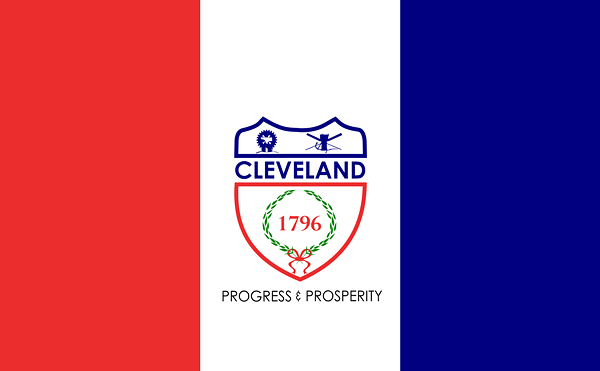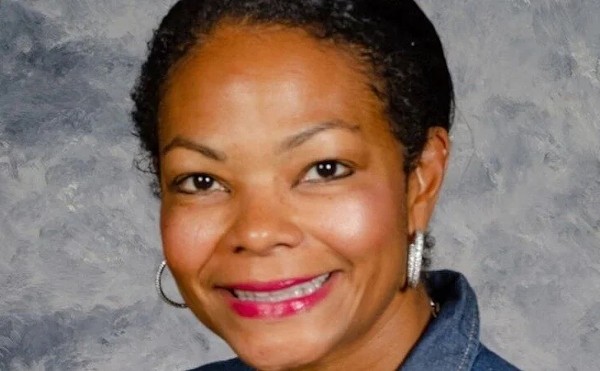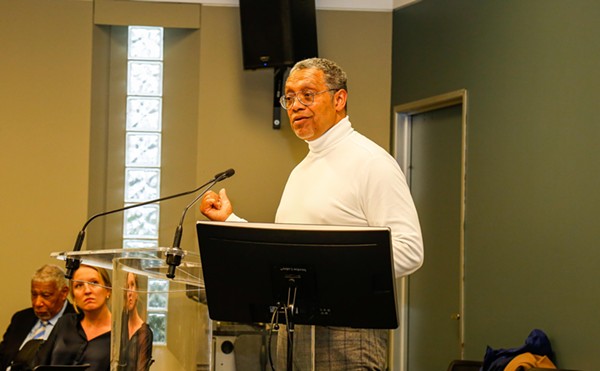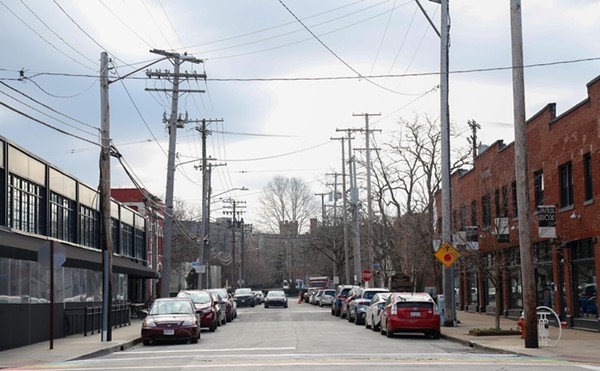It's just another day standing on the corner of Woodhill and Buckeye, waiting for the No. 10 RTA bus to take me to work. I'm a homecare worker, and though my employer provides a car for transport around the eastside of Cleveland during the day, I rely on public transportation to get there each morning and back home each evening.
From this perspective, at the corner waiting for the bus every day, it's easy to be overwhelmed by the negatives in the neighborhood. Why is there so much vacant space? What would actually help? The problems are complex and many, and so are possible solutions. Like the long-planned roadway called the Opportunity Corridor.
Last summer, while listening to the radio and dodging potholes on East 93rd and East 116th streets, I heard an announcement about an unexpected source of funding, through Ohio Turnpike funds, to pour dough into the Opportunity Corridor. Gov. John Kasich was touting the benefits for the Cleveland Clinic and University Hospital — the road project would connect I-490 to the University Circle area — and gushed that the OC would "lend hope and economic development to battered neighborhoods" — the exact ones I lived in and drove through.
Meanwhile, business leaders across town and the Greater Cleveland Partnership, the region's chamber of commerce representing large business interests which had lobbied for the corridor, pushed for more specifics on when funds would arrive, anxiously awaiting groundbreaking to happen as soon as possible.
I wondered: What exactly was the Opportunity Corridor? How was it planned? Why were business leaders among the loudest voices championing the cause? How was it sold to residents (some of whom were going to be displaced by construction) and what promises were made? And, most importantly, were the problems of Cleveland's east side really easily solved by simply building a new road?
What is the Opportunity Corridor?
The Opportunity Corridor is designed to connect I-490, which currently dead-ends into East 55th Street, to University Circle, which has the highest concentration of jobs outside of downtown, about 3 miles away.
There are two phases in the $350 million project. Phase 1 would improve and widen East 105th Street with little effect on the neighborhood. Phase 2, which won't get underway until July 2017, is the new, expensive roadway. Phase 2 involves the state of Ohio taking over 60 residential properties and 20 businesses in the path of construction. Phase 2 seeks to build a quicker (by minutes) route for travelers to University Circle, many of whom currently take I-490 to East 55th to Quincy Avenue.
In early 2001, an Ohio Department of Transportation (ODOT) Innerbelt study team connected with eastside workers who preferred a more direct route, in lieu of the indirect paths that had them traveling on the Innerbelt and through downtown. Those early talks led ODOT to form the Cleveland Opportunity Corridor Study. The estimated savings in travel time for those workers? Not much, but ODOT has declined to complete a time study, so there's also no concrete answer, and the organization replied to questions with nothing more than boiler plate responses touting the direct link. From the beginning though, the plan was largely designed for higher income, mostly white commuters to drive through lower income, most black urban neighborhoods.
When ODOT talks about local access to the road, it is not talking about access to healthy food, parks, jobs or schools — it's simply talking about local highway access in the most fundamental sense. Those destinations lie outside the neighborhoods, but it's foolish to believe a road fixes "local access" because it is based on the assumption that everyone has cars. In fact, 30 to 40 percent of the households in neighborhoods in the path of the OC don't have cars.
Promoting sprawl hardly promotes change, but then again, this road is not about economic development; it's simply watered-down urban renewal. By that, I mean that an interstate extension through Cleveland and the east, because of cost and opposition, has become only a boulevard to University Circle. Despite its lack of big-city traffic issues, Cleveland has plenty of big-city infrastructure already, by the way, ranking fourth nationwide for highway lanes per capita.
The idea of extending a highway through the area is nothing new. Back in 1963, county engineer Albert Porter made public his proposals for the so-called Clark Freeway (I-290). Porter, it should be noted, was not a fan of anything much except finding a way to move cars to the suburbs more quickly. And he wasn't exactly one for history: He once suggested removing the Guardians of Traffic to widen the Lorain-Carnegie Bridge span. "Those columns are monstrosities and should be torn down and forgotten," he said. "There is nothing particularly historic about any one of them. We're not running a May Show here."
The Clark Freeway would have run east and west along the Shaker Lakes to I-271 in Pepper Pike. Eighty homes and five commercial properties would have been eliminated. Immediately, Shaker Heights residents, led by Mayor Paul K. Jones, mobilized in opposition. Porter liked to refer to those residents as "little old ladies in tennis shoes"; those "little old ladies" formed the Nature Center at Shaker Lakes, which complicated Porter's proposed route, and 2,000 of them, including residents of Richmond Heights and Highland Heights where the route also went, jammed a public meeting in 1970 in unified opposition to the proposed freeway under the banner of Citizens for Sane Transportation and Environmental Politics.
Where is that outrage today? You can look at the neighborhoods the proposed road goes through and answer that question. You can also look to the daily paper. Back in the 1960s, the Sun News was a vocal opponent to the project — Harry Volk, the editor, called the Clark Freeway a "concrete and steel monster." Comparatively, the Plain Dealer has been a vocal champion from the start, and there's a very good explanation for that.
The steering committee for the Opportunity Corridor is a group of folks largely appointed by the Greater Cleveland Partnership (GCP) representing various business and community development organizations. The co-chairs of the steering committee are Jamie Ireland and Terry Egger. Ireland is a former Wall Street executive, the managing director of Early Stage Partners, and the president of the Musical Arts Association, which operates the Cleveland Orchestra. Terry Egger, until recently, was the publisher of the Plain Dealer and held that post throughout the duration of the Opportunity Corridor planning process. Egger is also a board member at the Cleveland Clinic, which would be the chief benefactor of its construction.
Under the co-chairs is the rest of the steering committee. Per ODOT's public involvement summary, "In the early planning stage, the committee was made up mostly of business, political and transportation agency representatives and leaders of Community Development Corporations." The early planning stage consisted of five steering committee meetings from May to November 2005. There was no public notice for these meetings and no residents present.
In fact, the first public reporting on the project came after those five meetings were already complete, in a Nov. 28, 2005, PD article headlined, "A boulevard of opportunity; Proposal would link I-490, East 105th." The article stated, "...the committee started meeting in May. Members studied four alternative routes and are focusing now on two."
A second series of steering committees met from 2009 to 2012. In these meetings, one resident from each of the five affected neighborhoods was added to the committee. One.
And the project director for the whole thing was Terri Hamilton Brown, who was the president of University Circle Incorporated (UCI) when the committee began meeting in 2005 and who subsequently left UCI to become project director for the corridor at the Greater Cleveland Partnership, a position funded by $100,000 each from the Gund and Cleveland Foundations. Throughout the early Opportunity Corridor presentations, the GCP logo is front and center, and you wonder: Why is a chamber of commerce representing large business interests lobbying for a road through neighborhoods like Kinsman, where the median household income is $13,300?












